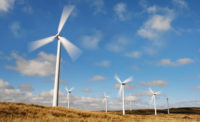Panelists for Wolters Kluwer's Blue Chip Economic Indicators, New York, are increasingly worried about a recession. The panelists indicated that although the Federal Reserve's monetary policy remains supportive, economic growth expectations are wrought with uncertainty, particularly over international trade issues and economic conditions abroad.
The average of panelists' probability estimates for a 2020 recession rose to 38.3%, up from 36.6% over the summer, while the average of the probability estimates of the 10 most pessimistic panelists increased from 52% to 56%.
How it works is, 96% of participants look for a 25-basis-point reduction in the federal funds rate target at the conclusion of the Sept. 17-18 meeting. The consensus expectation is that by year-end, the funds rate would be 1.70%, implying one additional cut at the Oct. 29-30 meeting (54% of panelists) or the Dec. 10-11 meeting (23% of panelists).
"Expectations of additional rate cuts by the Federal Reserve Board allay some fears of a recession, but the risks remain elevated," says Joseph Aguinaldo, executive editor of Wolters Kluwer's Blue Chip Economic Indicators and director of data research and analytics of Haver Analytics, New York. "The Blue Chip panelists rank trade disputes as the primary source of risk to growth with slow growth in China and Europe ranked second. Sluggish corporate profits also worry them. When asked to cite examples of late cycle imbalances, several participants named corporate debt."
Other consensus findings from the survey include:
- The consensus for GDP growth this year is now estimated at 2.3% and 1.8% in 2020.
- The panel forecasts just 2.9%t growth in non-residential fixed investment this year after the corporate tax cut boosted 6.4% last year, with a further slowing to 1.8% in 2020.
- Consumers seem to be a source of stability for the U.S. economy. Consumer spending is forecast to grow 2.6% this year, down slightly from 3% in 2018.
- Disposable personal income growth is estimated at 3% percent this year, down from 4% in 2018, but up from 2.8% in August's survey. For 2020, the panel estimates a 2% increase, marginally less than the August 2.1% forecast.
- The unemployment rate is seen dipping from the recent 3.7% to 3.6% in Q4 this year and Q1 next year, and then rising slightly to 3.8% by late 2020. This implies that the labor market will remain relatively tight throughout the forecast horizon.



